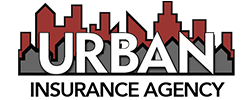 Google has been heavily promoting their experimental autonomous autos as the near-future’s answer to safer roads. With 11 self-driving car accidents, some people are asking the question, are these cars safe enough for public use?
Google has been heavily promoting their experimental autonomous autos as the near-future’s answer to safer roads. With 11 self-driving car accidents, some people are asking the question, are these cars safe enough for public use?
First let’s look at the basic data behind these accidents.
California has 48 “self-driving cars,” in the past six months 4 of them have been in an auto accident; as an insurance agent predicting risk, I would count that as 8 per year. With claim accident rates of 17% or 1 out of 6, insurance companies would deem these as “High-Risk.”
Compare this to the 5% per year accident rate for drivers, and in the fact Google’s self-driving cars are not battling for a parking space in a Best Buy parking lot during Christmas shopping season, towing a boat, or driving in winter conditions on Chicago’s streets. The fact that these vehicles are brand new and meticulously maintained, should reduce their accident rate below any national average which casts more doubt on their safety record.
Now Google will counter any questions about the risks associated with self-driving cars by pointing out their data shows that when you examine the 11 auto accidents involving autonomous cars seven were the result of their cars being rear ended, one occurred when a driver ran a red light. In fact they tag other vehicles at-fault in each incident. There is no question that based on the complexity of operating a car on roads willed with other cars, at times driven be people that neglect to follow laws or basic common sense; the makers of autonomous autos have reason to be proud.
Auto accidents in 2013 resulted in the deaths of 32,719 people, so any technology that has the potential to save lives must be taken seriously. Self-driving cars show promise in reducing traffic deaths and injuries, they also face challenges before winning the public’s approval.
Bill Gurley, who holds a stake in Uber, in a recent interview with the Washington Post explained how people expect higher safety standards from autonomous cars. People are more willing to forgive human error than faulty technology . The public is going to come down hard on any company if their product results in death or injury.
Gurley stated, “I would argue that for a machine to be out there that weighs three tons that’s moving around at that speed, it would need to have at least four nines because the errors would be catastrophic.” The 99.99 percent safety guarantee that Gurley places of a self-driving car is a high, but I would agree, necessary and appropriate.
Are we going to see autonomous autos filling our roads in the next few years, no, but if testing continues to show promise we should expect a to see them available for mass use in a decade.
In the mean time, we are seeing parts of the technology required for self-driving cars creeping into our current new models of conventional human-driven vehicles. A few examples include Adaptive cruise control that can automatically slow down a vehicle in traffic so as to maintain a safe following distance. Collision avoidance systems using sensors to alert drivers when the vehicle is following too close or when a car is in your “Blind-spot” when attempting to change lanes.
While Google’s self-driving cars might not be totally safe enough for public use, they show a glimpse of the near-term future.
Quote, Buy, and then Print your Policy
Have Questions or Prefer to Talk to an Insurance Agent?
